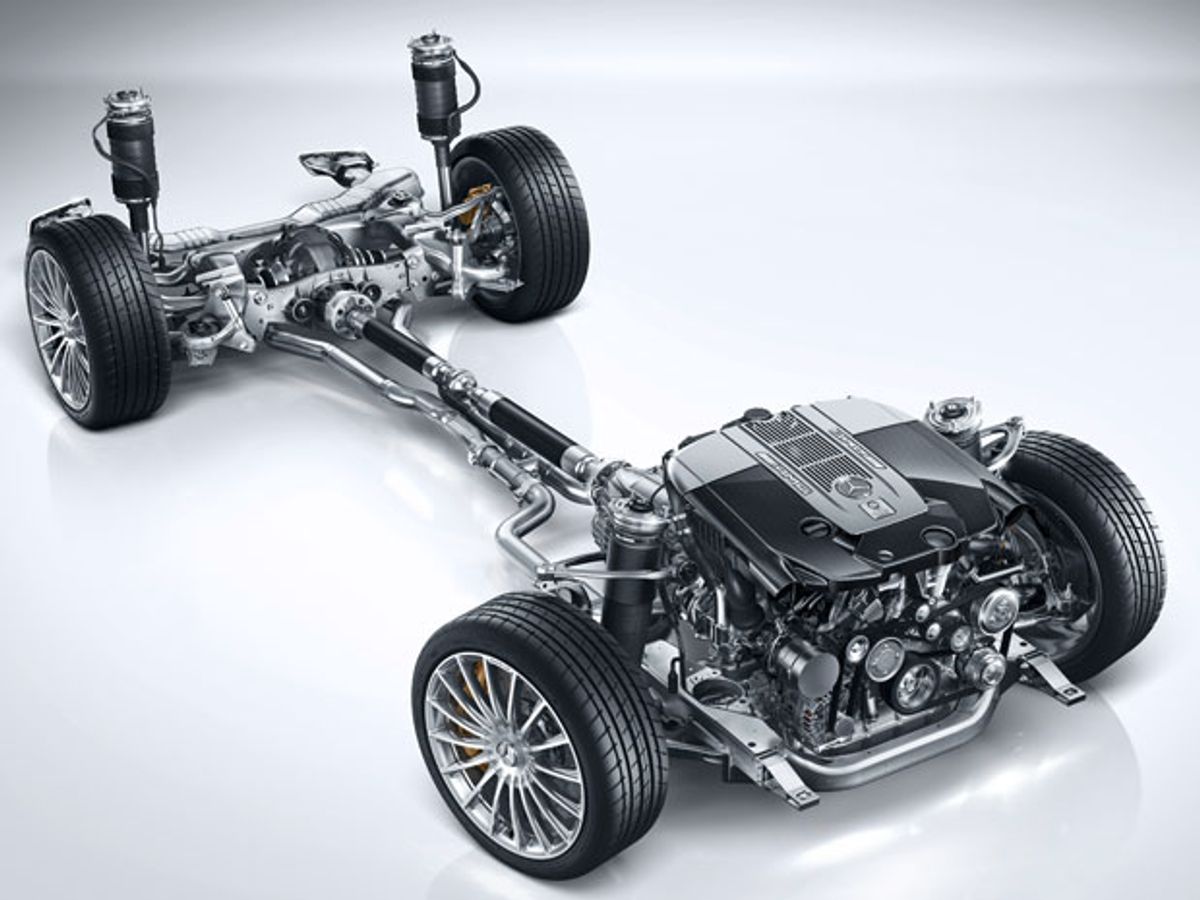Mercedes-Benz has been known to throw technical curves, including the world’s first car and firsts in diesel engines, anti-lock brakes, and electronic stability control.
Now, the German automaker’s S-Class Coupe throws a literal curve, automatically leaning into corners to keep pampered occupants from being tossed to and fro.
Mercedes might have called it ACS, for Anti-Champagne Spillage. Instead, we have Active Curve Tilting, whose operation at first may seem counter-intuitive. Instead of working to keep the body flat for sharper handling, as in traditional adaptive suspension systems—including the Active Body Control unit on this very car—this driver-selectable gizmo aims to isolate passengers from stressful centrifugal forces.
Picture a motorcyclist or skier leaning into turns, and you’ll get the idea. This swanky, two-door version of Mercedes’ self-steering S-Class sedan can tilt its body up to 2.6 degrees as it negotiates corners.
How does it work? The system leans heavily on its windshield-mounted stereoscopic camera (already used for lane-keeping, semi-autonomous steering, collision prevention and other functions). It looks for curves and surface changes up to 15 meters down the road. That camera and its chip-based controller link to steel suspension struts at four corners. Integrated in parallel with those struts, hydraulic plungers and springs incline and stabilize the body within fractions of a second, based on the car’s speed and the radius of the turn.
That lean-in reduces lateral acceleration experienced by occupants, while boosting vertical g-forces. Picture the difference between a car zinging around a banked oval, versus a flat road. Passengers are held straighter and tighter in their seats.
It works as advertised, even if the effect can be subtle. Setting out through the quilted green-and-brown landscape of Tuscany, I turned on the hot-stone massaging seats; turned up the 1,540-watt, 24-speaker Burmester audio system and aimed the S550 Coupe toward the nearest bends—never hard to find in Italy.
Cruising through right-hand curves between 60 and 100 kph with the system switched off, I noticed that my left knee often swiveled against the door panel. But when I toggled up the Curve setting, my knee continued to point straight ahead, and I definitely felt less force pushing me sideways. The system is operable at speeds between 30 kph and 180 kph. It can raise or lower individual springs by 40 mm, leaving a bit of extra travel for big bumps or to counteract large suspension loads.
All well and good, I thought. But what if I want to feel the forces at the wheels?
Turns out Mercedes thought of that. “Feedback at high speed or near the handling limit is very important,” a Mercedes engineer assured me. Pulling out a complicated graph, he showed how the system begins to dial back the tilt-a-whirl effect as cornering forces increase, stepping aside entirely when the big Benz approaches the physical limits of its tires. But even in this roughly 2000-kilogram cruise ship, with its 300-kilowatt (402 horsepower) biturbo V8, those limits are so high that passengers would howl for mercy long before then.
“So the system will not improve your lap times, but it won’t detract from them, either,” the engineer said.
Type A drivers are also welcome to shut the feature off entirely and feel the burn in this Mercedes. Same goes for its fearsome 300 kph (186 mph) offshoot, the S63 AMG Coupe and its hand-built, 430 kW (577 horsepower) 5.5-liter biturbo V8.
There’s one catch. The 2015 S 550 and S63 Coupes sold in the United States will offer exclusively 4Matic all-wheel drive. Since Active Curve Tilting doesn’t yet package with AWD, Yanks can only have the system—for now—on the rear-drive, roughly $220,000 S65 AMG version with its 621-horsepower, biturbo V12. (The “base” S550 version should start for around $117,000 when it goes on sale in fall.)
Still, Mercedes’ latest wunderbar technology turns the traditional approach of active suspensions on its head while keeping passengers’ heads nice and stable.
Lawrence Ulrich is an award-winning auto writer and former chief auto critic at The New York Times and The Detroit Free Press.





